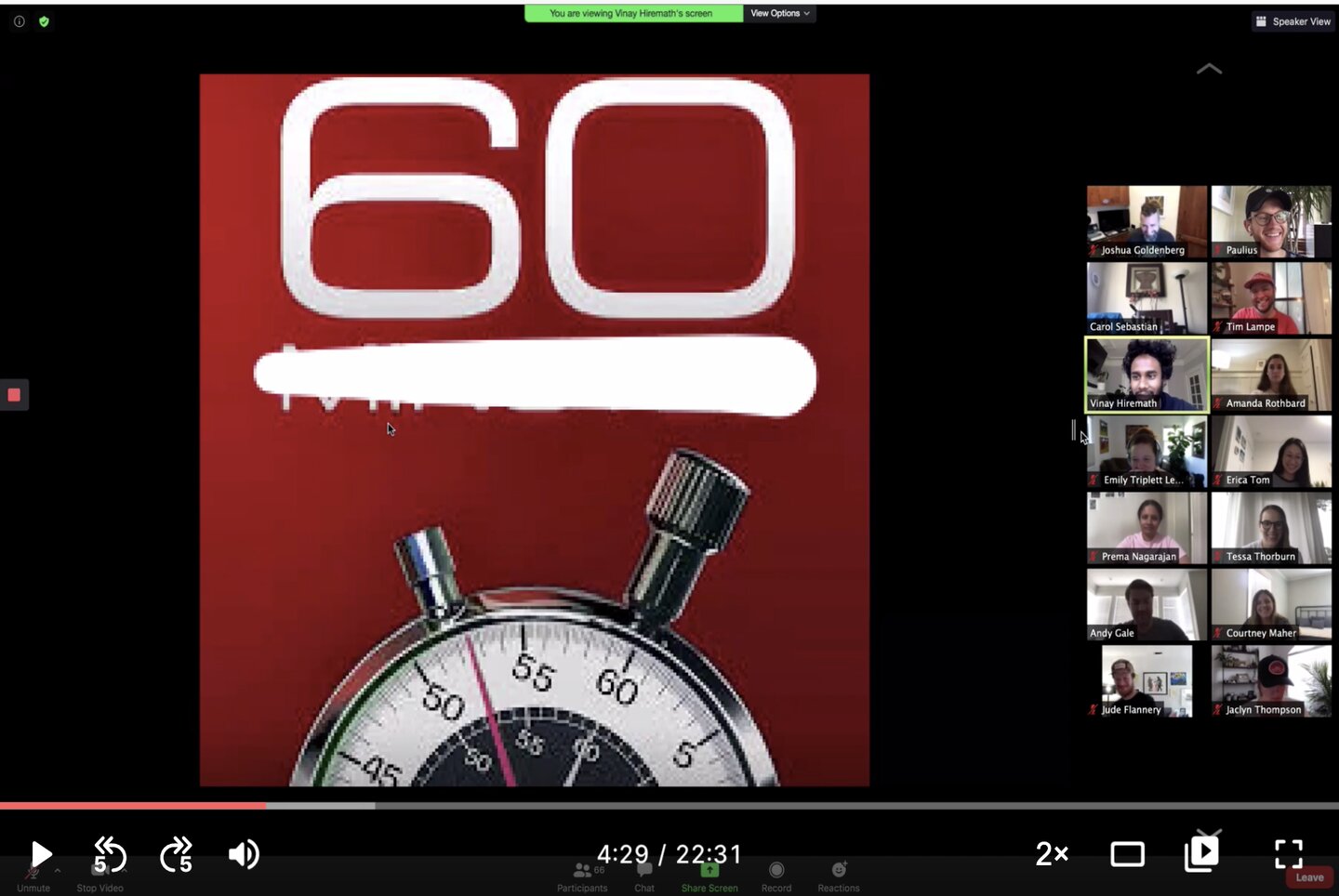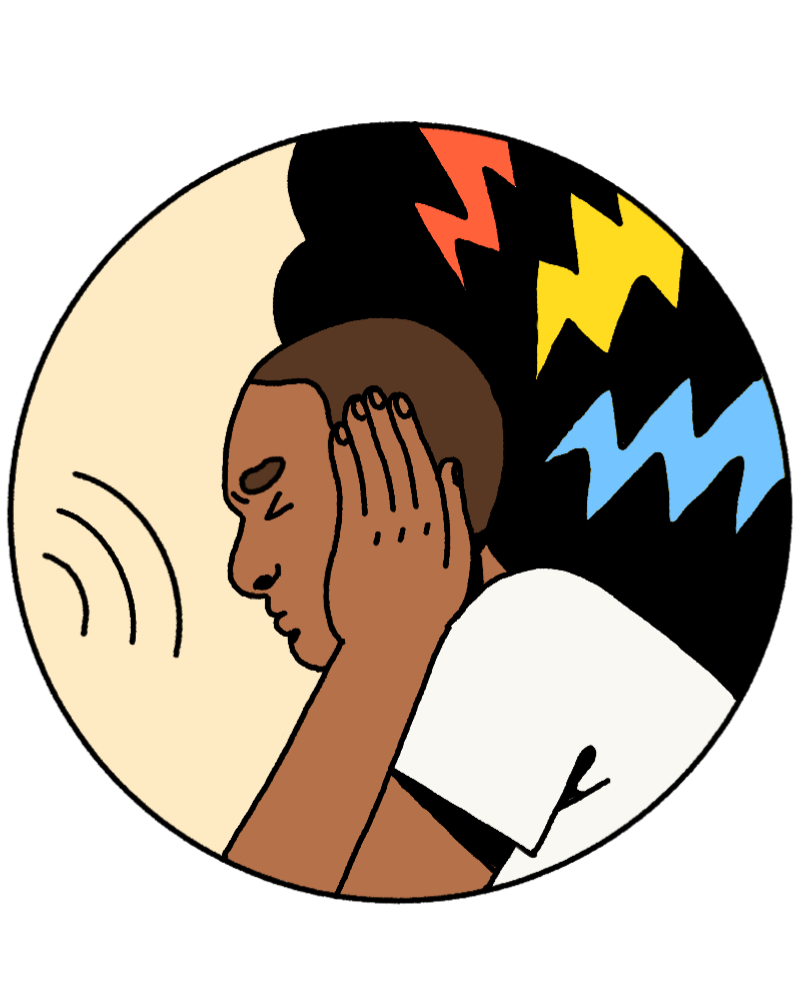I remember the first time I heard it: a cross between Bill Swerski’s Superfans and an angry Muppet. No, I’m not describing a monster … I'm referring to the first time I heard a recording of my own voice.
Hating the sound of your own voice when played back in a voicemail greeting or video, for example, isn’t just a ubiquitous form of self-deprecation — it’s a scientific phenomenon. A 1966 study even coined a term for it: voice confrontation.
Just because you’re wired to grimace at the sound of your voice doesn’t mean you can’t get used to, or even — gasp! — grow fond of it. Even better, you can get better acquainted with the sound of your voice without even having to listen to it.
Why you hate the sound of your voice, according to science
The first step toward appreciating, or at least tolerating, the sound of your own voice is to understand the science behind it.
When someone speaks, their voice creates sound waves that travel through the air and vibrate the listener’s eardrums.
But when you talk, you not only hear your voice in the same way you do others’ voices — you simultaneously hear the vibrations of your vocal cords and the bones surrounding them. In other words, every time you speak, you hear your own voice both externally and internally.
The nuances of the human voice add another layer of complexity to its perceived sound: The part of your brain that processes sound temporarily shuts down while you’re talking, so you’re not actually completely aware of the sound of your own voice.
The TL;DR — yes, it’s quite complex. All this to say, when you listen to a recording of your voice, you’re only hearing the external version of it — which, as you now know, is only a tiny sliver of a much bigger pie.
4 tips for getting used to the sound of your voice
For years, I steered clear of using any medium that involved recording my own voice, especially at work (the last place I wanted to feel vulnerable).
I then joined a company where sending voice notes and video updates was preferred over writing emails and long docs. I had no choice but to listen to the sound of my own voice regularly, however torturous it seemed. 😅
But once I got over the initial hurdle of hearing the sound of my voice a few times, I eventually grew accustomed to it — and my work and self-confidence both got a major boost. Now, I can hardly tell the difference between my recorded voice and the one I hear when I speak to someone in real time.
Here are some of my tips to getting used to the sound of your recorded voice:
1. Practice diaphragmatic breathing.
Your voice probably sounds higher to you when it’s recorded because it’s not going through all of your internal filters.
While you can’t radically alter the sound of your own voice, you can practice diaphragmatic breathing to give you more control over its cadence and depth.
Located just below your lungs, the diaphragm is a muscle that expands and contracts every time you inhale and exhale. Actively engaging the diaphragm while breathing helps move more air into your lungs and out through your vocal cords, giving your voice a richer and deeper sound — especially in recordings.
As an added bonus, diaphragmatic breathing is also a great way to manage anxiety, which comes in handy if the mere thought of hearing your own recorded voice makes you nervous.

2. Record a video of yourself speaking (or a few).
Similarly to seeing a picture or video of your face that isn’t a mirror image, listening to a recording of your voice feels like an out-of-body experience because you feel detached from an intimate part of yourself.
One way to get more comfortable with the sound of your voice is to record a video of yourself talking. Contextualizing your voice within your own facial expressions and gestures can take the edge off of how different your voice sounds to you.
Easing yourself into the habit of recording videos will also help you get over any camera anxiety you might have!
3. Focus more on what you say, not on how it sounds.
Chances are you’re recording your voice because you have a message to get across. Instead of fixating on how your voice sounds, shift your focus to communicating in the best way possible.
For example, perhaps you can get away with a few “umms” without distracting from your core message, or maybe you’d benefit from adding a little more production value to your recording. (If you could use a little help with the former, Noah Zandan provides great tips on how to stop using filler words when speaking.)
If this all sounds easier said than done, take comfort in knowing that humans aren’t very skilled at recognizing voices, particularly a single person’s range of sounds, such as their speaking voice, laughter, and shouting. According to one study, participants had a tough time matching the sound of a speaker’s vowels to the sound of their laughter, especially if they did not already know the speaker.
If your recording is cohesive, coherent, and respects your recipient’s time, don’t worry about the sound of your voice — your message will take center-stage.
4. Learn to appreciate your voice — quirks and all.
As Melissa Dahl writes in The Cut, listening to your voice forces you to confront “the uncomfortable truth that the ‘you’ who exists in your own head is often very different from the ‘you’ that the world sees and hears.”
Your voice might sound jarringly unfamiliar to you, but it’s what everyone else — family, friends, and colleagues — hears whenever you speak. That’s right: You’re the only person who thinks your voice sounds wildly different when it’s recorded.
So while you can’t dramatically change the sound of your own voice, you can change the way you feel about it. The qualities you may deem cringeworthy about your voice or the way you talk, like your accent or the sound of your laugh, are precisely what makes your communication more human and uniquely you. Embracing authenticity will only help you build more meaningful connections at work and beyond.
Over time, you’ll come to terms with the fact that the sound of your voice, however different it sounds when it’s recorded or how you perceive others hear it, is still very much a part of you. Reminding myself of this has helped me get through countless recordings. 😄
It’s time to speak up
While you may be hyper-aware of the sound of your voice and are tempted to fixate on it, others will likely forget about its nuances. Don’t let it deter you from exploring new ways to express yourself efficiently or effectively.
Your voice is a conduit for your thoughts, feelings, and ideas; embrace its power, focus on your message, and your work will be better off because of it.

